Redness, skin skin on the legs, cracks between the fingers, ulcers on the legs, changes in the nail condition: shine loss, conventional pink shade, thickening of plates - these and other signs indicate the development of fungal infection. Every fifth resident of the earth is suffering from mycosis. Therefore, you need to know how the fungi look and turn on the legs, what causes its appearance and how to treat this unpleasant disease.
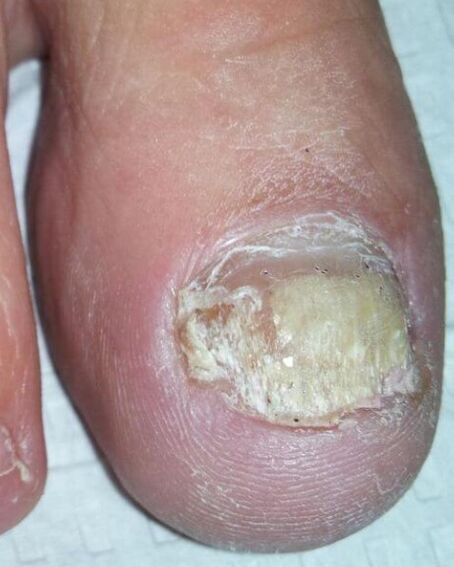
Causes
In most cases, mycosis infection occurs directly from humans or through the surrounding objects. Favorable conditions for reproduction of fungi are fever, moisture. Disputes can also maintain vitality in a dried state after poor processing of manicure tools.
The main causes of the disease include:
- Lack of regular legs care.
- Placement with a person with fungi.
- Using someone else's shoes, socks.
- Stop the injuries.
- Visiting the common areas of "mushroom" (beaches, baths, pools).
- Inadequate processing of accessories for pedicure.
- Wearing tight shoes from synthetic materials.
- Professional harmful (work in high temperatures and humidity).
- Shoe shop without socks and squads.
Fungal diseases in humans develop faster in the light of functioning characteristics, as well as as a result of immunity, local circulation, and skin changes. The causes of the body are as follows:
- Endocrine pathology (diabetes, obesity);
- Pregnancy;
- Immunodeficiency states;
- Increased sweating;
- Foot diseases;
- Vascular disorders;
- Chronic skin diseases (eczema, psoriasis);
- Prolonged administration of medications that inhibit immunity (corticosteroids, cytostatics).
Types of pathogenic fungi
Mushrooms on the human body are fed on proteins - keratin, elastin, collagen, dividing their enzymes: keratinase. The localization of mycosis depends on the action of keratinase and the ability to digest different types of keratin.
Mycoses on the legs cause the following types of fungi:
- Trichophyton rubrum-fungi-sampl, which live in the keratinized layer of skin. Causes lichen cut, epidermis damage, nails in 80 % of cases.
- Trichophyton mentagraphytes causes epidermophytesis stops.
- Trichophyton interdigitale. On the legs, the fungus causes dermatophytosis, onychomycosis.
- Candida genus fungus affects the skin and nail plates, with a strong reduction in immunity affecting the skin and nail plates with a strong reduction in immunity.
Fungal skin injuries
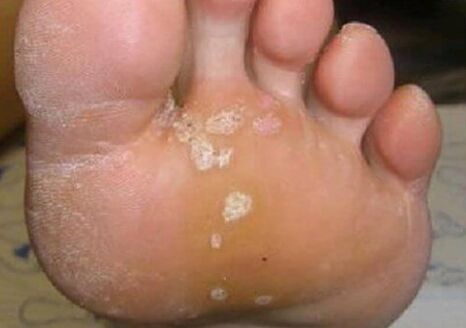
From mycosis to the legs, skin damage during psoriasis (sometimes called dry fungi) - red plates like peeling and on the surface. Such elements are often found on the knees, on the legs. This disease is not associated with fungal infection.
The manifestations of foot fungi are conventionally divided into four main forms. The Convention is in the joint of the clinical signs and the possibility of moving from one to the other.
In the intermediate form, the skin is experienced in interdigent spaces. Feet skin fungus is manifested in itching, combustion, accompanied by an unpleasant odor. Often the infection affects the feet from the intervals between 3 and 4, 4 and 5 fingers. The skin is red, moistened with moisture, with bumps, crying places between the fingers. These signs develop independently or in the background of the existing scam.
Note! Typical, secondary bacterial infection for intermediate injury, which exacerbates the disease. Bacterial, mycotic eczema develops by the formation of a rash not only on the feet, inflammatory elements appear on the ankle and decrease.
The advanced squamous-hyceratototiot form looks like a common, mass corn with cracks. Initially, mycosis of the skin of the legs can attract the dryness of the skin, the skin of the feet, the limited rough corn on the heels. People consider these symptoms an individual characteristic and do not refer to a dermatologist. Skin lesions can be accompanied by itching, burning. If you look at photos of fungi on this form of myiccy, you can notice deep cracks on the skin's skin thickened (and, as it were, in macasins). Such manifestations are painful. The scamner is characterized by the inclusion of nail plates by destroying them, behind the nail bed.
Manifestations of dyshydrotic (vesicular) shaped foot fungi are rare. The main symptom of the disease is the formation of bubbles with a thick membrane and transparent content. They are localized on the sole side of the foot, fingers as single or drainage formations. Then the bubbles are removed by the formation of erosion with purulent crusts, around the edges. Complications of vesicular injury include:
- Toxic allergic reactions. They develop for 4-6 days, often localized symmetrically: swollen reddish papules can see the foot, lower leg, forearm, face, mucous membranes.
- Connection of secondary bacterial or viral infection with the development of eczema.
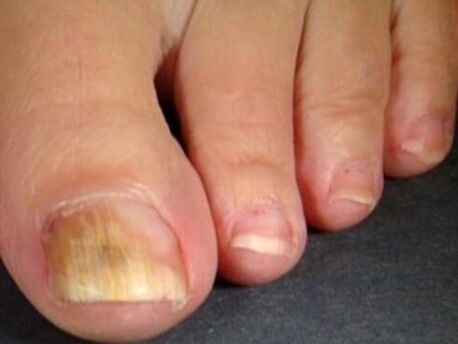
The deleted form of fungi on the feet is characterized by minimal damage, so it is not easy to identify. Key Signs: Appearance of Intestinal Peeling, Formation of Microconstricts between Fingers, Discomfort, Burning. At a long course, nail plates are participating.
Nail fungi
Onychomycosis occurs on the fingers of the skin fungi, feet, in the absence of attention to the problem and in the absence of adequate treatment.
The first symptoms and signs of onychomycosis can also be overlooked. You should contact nail fungi on your feet and contact the dermatologist:
- Change the color of nail plates;
- Appearance of yellow or gray spots;
- Loss of brilliance;
- Appearance on the surface of disorders;
- Strips in nail structure;
- Cleanliness.
There are different classifications of onychomycosis. With the appearance of the nail plate, they are divided into:
- Normomrophic. Fungal infection of the nails changes the yellowish-gray, thickness and shape remains the same.
- Hypertrophic. This type of fungi is characterized by rough changes: the nails become yellow, thickening. If you look at photos depicting this type of onychomycosis, you can notice the legal form of plates. Transverse studies, weakening and cleanliness are visible on the free edge. Such a change in nails causes their growth. Walking becomes painful.
- Onycholithic. The nail plates will become thinner, change the color, remove the nail from the bed.
Depending on the localization and quality of the nail plate, the following types of onychomycosis are distinguished: distal; Side; Mixed, proximal; Total; Surface.
Defeat of candidiasis
Separately, the damage to the genus fungi should be considered Candida. This conditionally pathogenic fungus causes deep (affects the internal organs) and superficial mycosis (dermatomycosis, onychomycosis). Under normal conditions, human immunity inhibits the reproduction of these fungi and does not become a massive infection. Thus, Candida's action is manifested by significant disorders in the body protection organ and requires a thorough examination to determine the cause of immunodeficiency. The first signs of infection are difficult to distinguish from trauma, frost.
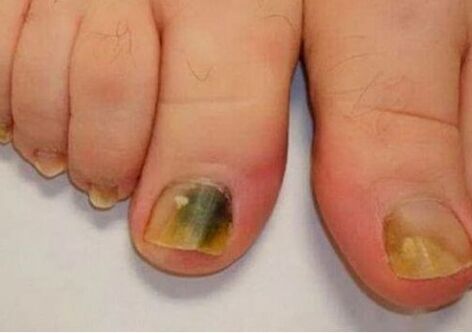
Fungal damage to the feet develops as follows:
- The fingers of the legs are nail roller inflammation, swelling, cracks on the skin, discomfort in any movement. Under the nail plates, a purulent whitish shade is formed.
- Inflammatory changes in the skin appear in the skin, the disease becomes chronic. The skin around the skin thickens, it grows. The infection affects the nail plates.
- The nails on the feet begin to thicken, sprinkle. Their color becomes brown, brown. Blood supply disorders cause refusal.
Diagnostics
The diagnosis of fungi on the legs includes:
- Talk to the patient (complaints, concomitant diseases, working conditions, determination of the possibility of infection).
- Check.
- Laboratory research methods (skin brushing, nails with a microscope, sowing of crop sowing, determining sensitivity to drugs, aspergil, candidates).
Treat
The fungus on the feet requires immediate treatment, which is prescribed by a dermatologist (or mycologist). You can perform assignments on an outpatient basis.
How and how to treat fungi on the feet, depending on many conditions:
- Localization of the abnormal process;
- Quality, severity of defeat;
- The presence of concomitant diseases;
- Patient age;
- In cases of women's therapy - pregnancy, breastfeeding.
Fungal treatment on the feet takes a long time and its main purpose is to disappear clinical and laboratory signs of infection. An incomplete course of therapy causes a recurrence of the disease.
Drug therapy
Drug treatment is performed using antifungal medications that not only destroy mycosis but also help remove inflammation manifestations and eliminate secondary infection.
They are divided into:
- Local. Apply damage (ointment, gel, cream, spray, varnish, solution).
- Systemic - Take orally (tablets, capsules, solutions).
At the initial stage of fungal infection, drug therapy is limited to the appointment of local funds. With a common mycosis, at a severe course, systemic antimycotic connection is needed.
Treatment with folk remedies.
There are many recommendations on how to get rid of fungi on folk and domestic feet. Most are involved in external use, some in the interior. However, you should not drink and use suspicious compositions on your feet in the hope of introducing neglected mycosis. These folk methods can harm health.
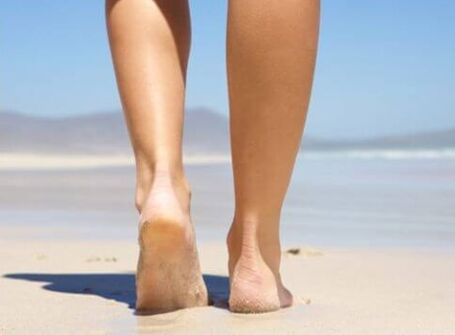
Note! The most common and effective treatment for fungi is the feet with salt, soda, essential oils. These therapeutic procedures prepare the legs and nails for drug use.
Surgical treatment
With massive fungal damage, nail plates should be removed. This method is safe and has virtually no contraindications. An alternative to surgical manipulation - the use of pastes and ointments to break the nails, followed by removal.
Laser treatment
The use of laser to combat onychomycosis is based on heating and destruction of fungi spores with a directed beam. This technique allows you to quickly cure onychomycosis, safe and used in patients who are contraindicated in systemic treatment.
Treatment of dermatomycosis
To start the treatment of fungi, local antifungal agents are used on the legs. If it is not improved after a two -week course of treatment, an antimycotic agent is required. In case of severe damage, skin fungi require a systemic drug recipe. Therapy continues until the infection is completely eliminated.
Treatment of onychomycosis
Local medications are prescribed to eliminate the initial manifestations of nail fungi. Mycosis with more than 2/3 of the nail area, including growth zone, distribution on other plates - indication of systemic medication. Onychomycosis with massive destruction of nail plates begins with surgical removal of the affected nail tissue. This method provides the focus of the infection.
Important!
Onychomycosis treatment is performed before the growth of healthy nails and can last up to 12 months.
The appearance of fungi on the legs can be caused by a variety of reasons. Attentive attitude to your health will help to recognize the disease in a timely manner and start treatment.



























